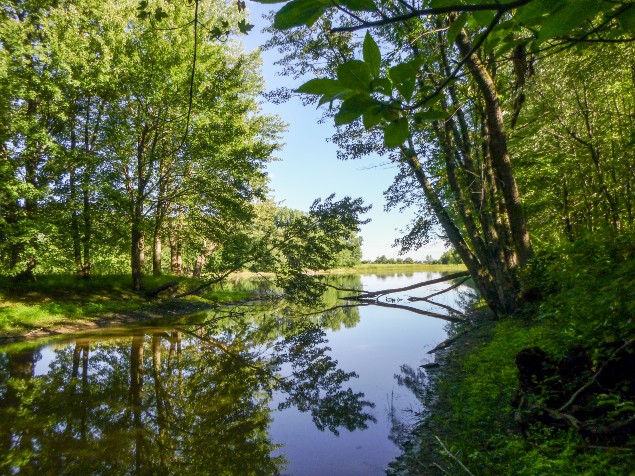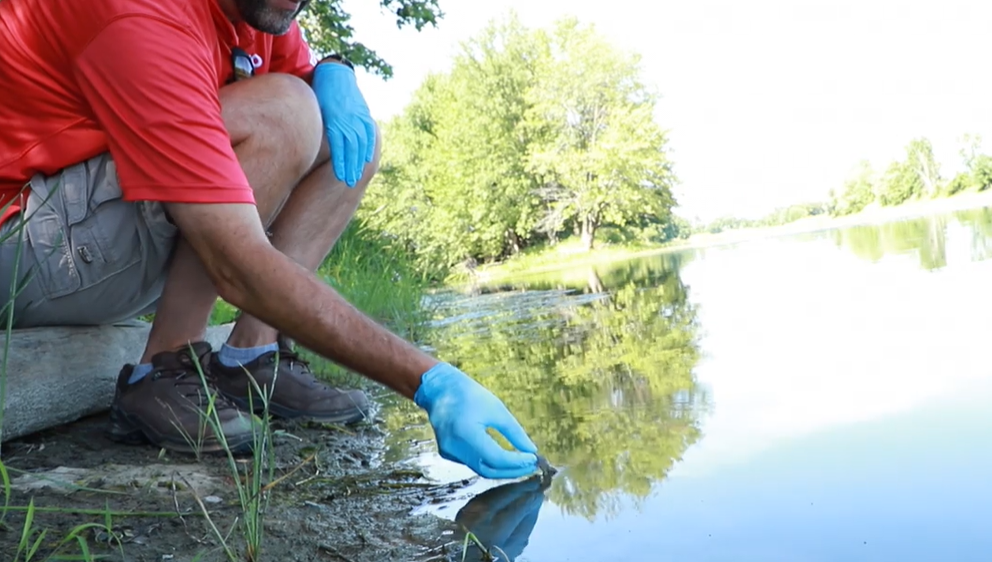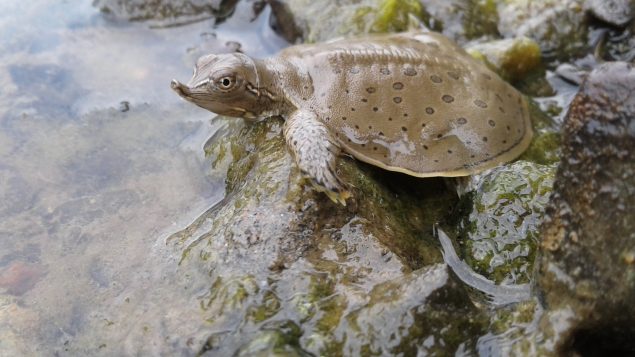The spiny softshell turtle is designated as endangered under Canada’s Species at Risk Act but it is getting a helping hand from conservationists. Concerned land owners have sold two properties just under two hectares large near one of the few sites where the turtles lay their eggs. These properties are located 70 kilometres southeast of Montreal along the Rivière aux Brochets in Pike River, Montérégie and were acquired by the Nature Conservancy of Canada (NCC).
“Even though this site is small, it is very important for the survival of fragile species, such as the spiny softshell turtle,” said Valérie René, project coordinator at NCC.” Rapid shoreline modification is one of the factors threatening its survival, and the shorelines on these two properties are among the few remaining natural banks on the Rivière aux Brochets.”

The shores of the Rivière aux Brochets play an important role in maintaining water quality for nearby communities. (Nature Conservancy of Canada)
Protected shoreline filters water
The two properties were not cultivated and they have returned to their natural state. As such, they play a major role in maintaining water quality for neighbouring communities. The shoreline filters runoff water and creates a buffer zone between streams and developed areas, notes the conservancy.
Biologists from the nearby Granby Zoo have been monitoring the spiny softshell turtle since 2009. In recent years, more than 1,500 eggs have been hatched at the zoo and were later released into the river. The environment is also a habitat for green dragon, a plant designated as endangered under the species protection act of the province of Quebec.

After hatching the eggs, Granby Zoo biologists release young spiny softshell turtle into the Rivière aux Brochets. (Nature Conservancy of Canada)
The owners of the properties, the Gasser family of dairy producers and Jean Lapierre sold them so that the natural habitats could be conserved for the long term.
The sale was made possible through contributions from the governments of Canada and Quebec, the U.S. Fish and Wildlife Service, Granby Zoo and CGI Group, an information technology consulting firm.







For reasons beyond our control, and for an undetermined period of time, our comment section is now closed. However, our social networks remain open to your contributions.